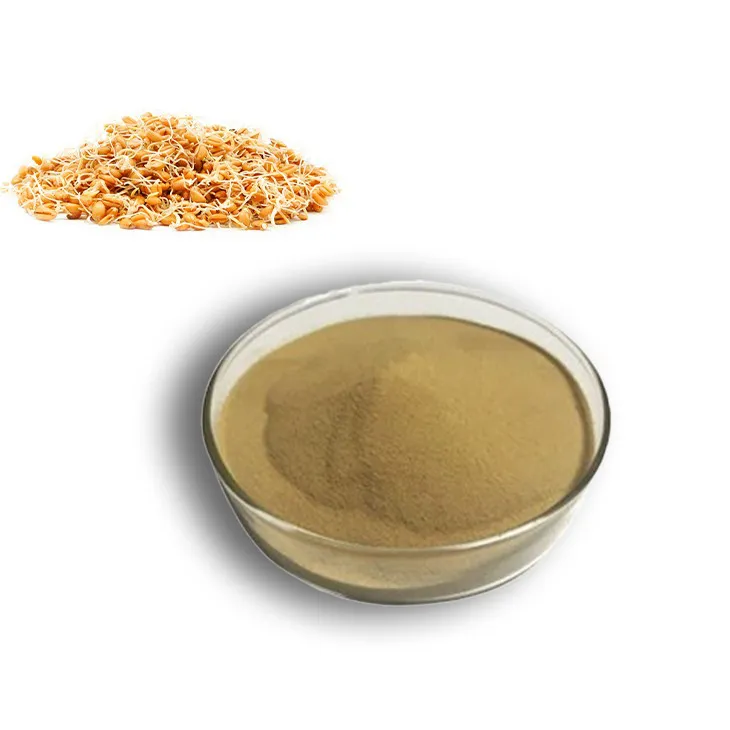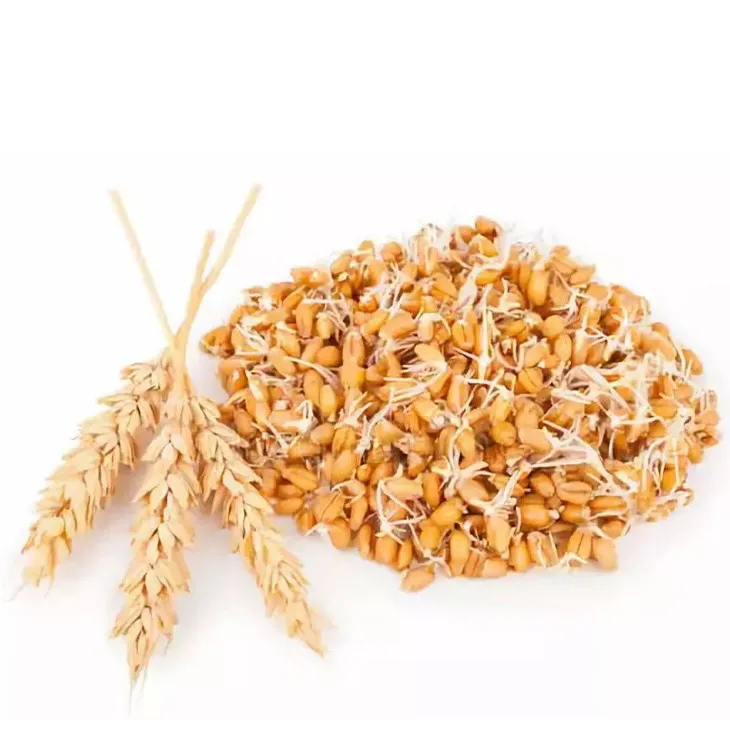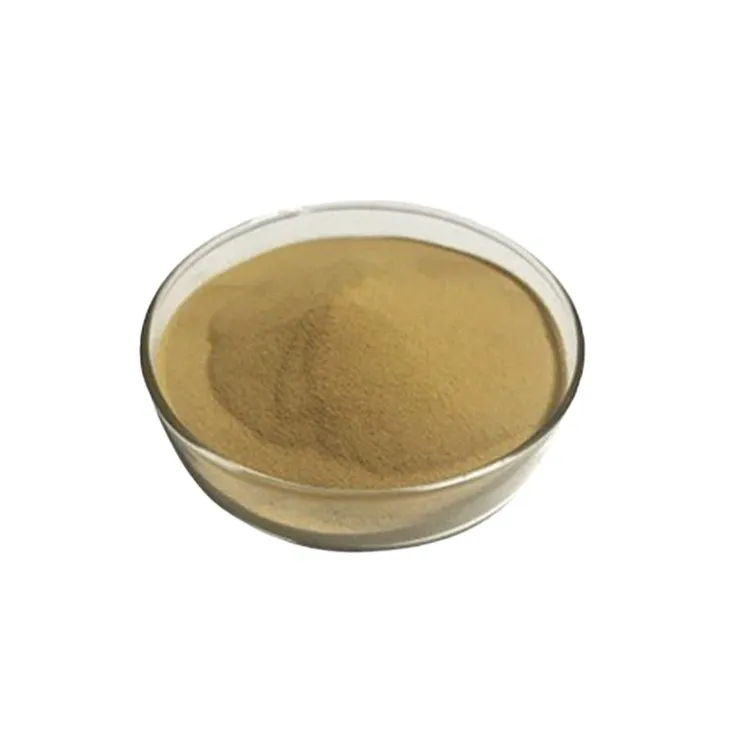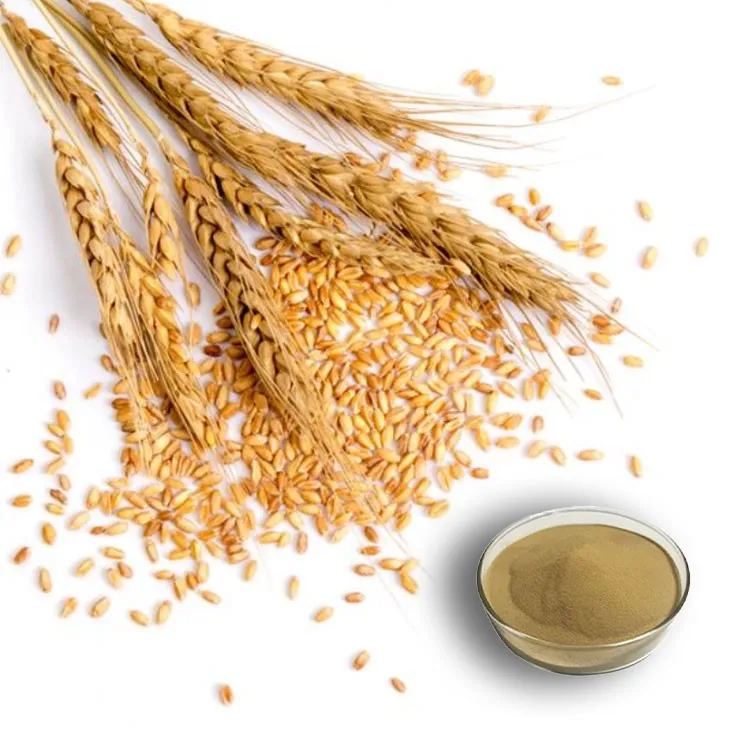- 0086-571-85302990
- sales@greenskybio.com
Benefits of Wheat Germ Extract in Cattle Feed.
2024-11-13

1. Introduction
In the world of cattle farming, the quality of feed plays a crucial role in determining the overall health, growth, and productivity of the animals. Wheat Germ Extract has emerged as a potentially valuable component in cattle feed. This extract, obtained from the germ of the wheat kernel, is packed with a variety of nutrients and bioactive substances that can have a positive impact on cattle. In this article, we will explore in detail the numerous benefits that Wheat Germ Extract can offer when incorporated into cattle feed.

2. Nutritional Composition of Wheat Germ Extract
2.1 Proteins
Wheat germ extract is a rich source of high - quality proteins. Proteins are essential for cattle as they are the building blocks for muscle development, tissue repair, and growth. The proteins in wheat germ extract contain all the necessary amino acids required by cattle, which are not always adequately supplied by other feed components. For young calves, which are in a rapid growth phase, these proteins are particularly important for proper skeletal and muscle development.
2.2 Vitamins
This extract is also abundant in vitamins. Vitamins such as vitamin E, which is a powerful antioxidant, are present in significant amounts. Vitamin E helps in protecting the cells of the cattle from oxidative damage. It is especially important for maintaining the integrity of the immune system cells and for improving the overall reproductive performance of cows. Additionally, other vitamins like B - complex vitamins play a role in energy metabolism within the cattle's body. For example, thiamine (vitamin B1) is involved in carbohydrate metabolism, and riboflavin (vitamin B2) is necessary for proper cell function and growth.
2.3 Minerals
Minerals are another important component of wheat germ extract. It contains minerals like phosphorus, potassium, and magnesium. Phosphorus is crucial for bone formation and energy transfer within cells. Potassium is involved in maintaining proper nerve and muscle function, while magnesium is necessary for enzyme activation and muscle contraction. These minerals ensure that the cattle's physiological processes function optimally.
3. Growth and Development Benefits
3.1 Muscle Development
The high - quality proteins in wheat germ extract contribute directly to muscle development in cattle. As the cattle consume feed containing this extract, the amino acids from the proteins are used to synthesize new muscle tissue. This is especially beneficial for beef cattle, where muscle mass is a key factor in determining the quality and quantity of meat produced. For example, in growing steers, the presence of wheat germ extract in their diet can lead to more efficient muscle growth, resulting in a higher proportion of lean muscle mass at the time of slaughter.
3.2 Bone Growth
The minerals present in wheat germ extract, particularly phosphorus and calcium, are essential for proper bone growth in cattle. Young calves need an adequate supply of these minerals to develop strong and healthy bones. Inadequate mineral intake can lead to skeletal problems such as weak bones or stunted growth. By including wheat germ extract in their feed, farmers can ensure that the calves have a better chance of developing a proper skeletal structure, which is also important for their long - term productivity and overall well - being.
3.3 Overall Growth Rate
The combination of proteins, vitamins, and minerals in wheat germ extract promotes a faster overall growth rate in cattle. This is due to the fact that all these nutrients work together to support various physiological processes. For instance, the vitamins are involved in metabolism, which provides the energy needed for growth, while the proteins and minerals are used for building new tissues. Cattle fed with wheat germ - supplemented feed are likely to reach their market weight or reproductive maturity more quickly compared to those on a diet without this extract.
4. Immune System Enhancement
4.1 Bioactive Components
Wheat germ extract contains bioactive components that have a positive impact on the immune system of cattle. These components can stimulate the immune cells, such as lymphocytes and macrophages, to function more effectively. For example, certain polysaccharides present in the extract can act as immunomodulators, enhancing the body's natural defense mechanisms against pathogens.
4.2 Disease Resistance
By strengthening the immune system, wheat germ extract helps in reducing the risk of diseases in cattle. Cows with a stronger immune system are better able to fight off common infections such as respiratory diseases, mastitis, and digestive disorders. This not only improves the health of the individual animals but also reduces the economic losses associated with treating sick cattle and potential loss of productivity. For example, in a dairy herd, cows with a healthy immune system are less likely to develop mastitis, which can significantly affect milk production and quality.
5. Impact on Milk and Meat Production
5.1 Milk Quality
In dairy cows, wheat germ extract can have a positive impact on milk quality. The nutrients in the extract, such as vitamins and proteins, can be transferred to the milk. For example, the presence of vitamin E in the milk can increase its shelf - life and antioxidant properties. Additionally, the improved health of the cows due to the extract's immune - enhancing properties can also lead to a reduction in the presence of somatic cells in the milk. Somatic cells are an indicator of udder health, and a lower somatic cell count is associated with higher - quality milk.
5.2 Meat Quality
For beef cattle, wheat germ extract can enhance the quality of meat produced. As mentioned earlier, the extract promotes muscle development, which can result in a more tender and lean meat. The presence of certain nutrients in the extract can also influence the fatty acid composition of the meat. For example, it may lead to an increase in the proportion of healthy fatty acids, such as omega - 3 fatty acids, which are beneficial for human health. This can potentially increase the market value of the meat.6. Cost - effectiveness and Sustainability
6.1 Cost - effectiveness
Although adding wheat germ extract to cattle feed may seem like an additional cost at first, in the long run, it can be cost - effective. By improving the health and productivity of the cattle, farmers can reduce the costs associated with treating diseases, improving growth rates, and enhancing the quality of products. For example, fewer sick animals mean less expenditure on veterinary services and medications. Also, faster growth rates can lead to shorter production cycles, which can save on feed costs over time.
6.2 Sustainability
Wheat germ extract is a by - product of the wheat milling process. Using it in cattle feed is a form of waste utilization, which contributes to the overall sustainability of the agricultural industry. Instead of discarding the wheat germ, it is being put to good use in improving cattle health and productivity. This also reduces the environmental impact associated with waste disposal.7. Conclusion
Wheat germ extract offers a wide range of benefits when included in cattle feed. Its rich nutritional profile, including proteins, vitamins, and minerals, promotes growth and development in cattle. The bioactive components enhance the immune system, reducing the risk of diseases. Moreover, it has a positive impact on the quality of milk and meat production. Considering its cost - effectiveness and sustainability aspects, it is a valuable addition to cattle feed that can contribute to the overall success of cattle farming operations.
FAQ:
1. What are the main nutrients in wheat germ extract?
Wheat germ extract is rich in proteins, vitamins, and minerals. These nutrients play crucial roles in the growth and development of cattle. Proteins are essential for building muscle mass, vitamins contribute to various physiological functions such as maintaining good vision and a healthy immune system, and minerals like calcium and phosphorus are important for bone development.
2. How does wheat germ extract improve the immune system of cows?
The bioactive components present in wheat germ extract are responsible for enhancing the immune system of cows. These components can stimulate the production of antibodies and immune cells, which help the cows to better defend against pathogens. By strengthening the immune system, cows are less likely to fall ill, reducing the need for antibiotics and other medications.
3. In what ways does wheat germ extract enhance milk quality?
Wheat germ extract may enhance milk quality in several ways. The nutrients it provides can contribute to better milk composition. For example, the presence of certain vitamins and minerals can affect the fat, protein, and lactose content in milk. Additionally, a healthier cow with an improved immune system, due to the consumption of wheat germ extract, is more likely to produce high - quality milk.
4. Can wheat germ extract also improve meat quality?
Yes, it can. The nutrients in wheat germ extract can influence the growth and development of cattle, which in turn can affect meat quality. It may lead to better muscle development, resulting in more tender and flavorful meat. Also, a reduced incidence of diseases in cattle fed with wheat germ extract can contribute to better overall meat quality.
5. How much wheat germ extract should be added to cattle feed?
The appropriate amount of wheat germ extract to be added to cattle feed depends on various factors such as the age, weight, and health condition of the cattle, as well as the overall composition of the feed. Generally, it is recommended to start with a small amount and gradually increase it while closely monitoring the cattle's response. A veterinarian or an animal nutritionist can provide more accurate and specific guidelines based on individual herd requirements.
Related literature
- The Role of Wheat Germ in Animal Nutrition"
- "Beneficial Effects of Bioactive Compounds in Cattle Feed: Focus on Wheat Germ Extract"
- "Nutritional Value of Wheat Germ Extract for Livestock"
- ▶ Hesperidin
- ▶ citrus bioflavonoids
- ▶ plant extract
- ▶ lycopene
- ▶ Diosmin
- ▶ Grape seed extract
- ▶ Sea buckthorn Juice Powder
- ▶ Beetroot powder
- ▶ Hops Extract
- ▶ Artichoke Extract
- ▶ Reishi mushroom extract
- ▶ Astaxanthin
- ▶ Green Tea Extract
- ▶ Curcumin Extract
- ▶ Horse Chestnut Extract
- ▶ Other Problems
- ▶ Boswellia Serrata Extract
- ▶ Resveratrol Extract
- ▶ Marigold Extract
- ▶ Grape Leaf Extract
- ▶ blog3
- ▶ blog4
- ▶ blog5
-
Organic Tongkat Ali extract powder factory.
2024-11-13
-
How to make powder with ashwagandha extract.
2024-11-13
-
Rosehip extract manufacturers from China.
2024-11-13
-
The best cat's claw extract in nature.
2024-11-13
-
Chinese Dandelion Leaf Extract Suppliers.
2024-11-13
-
Curcumin
2024-11-13
-
Peppermint Oil
2024-11-13
-
Milk Thistle Extract
2024-11-13
-
Lemon Balm Extract
2024-11-13
-
Curcumin Extract
2024-11-13
-
Stevia Extract
2024-11-13
-
Citrus Aurantii Extract
2024-11-13
-
Genistein
2024-11-13
-
Cocoa Extract
2024-11-13
-
Thunder God Vine Extract
2024-11-13





















